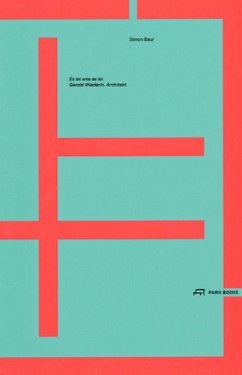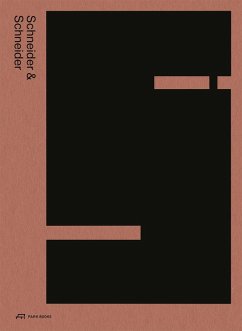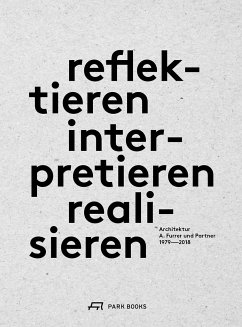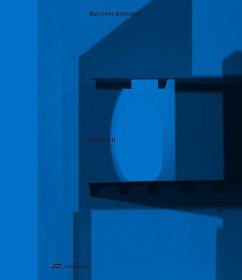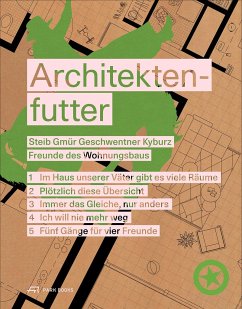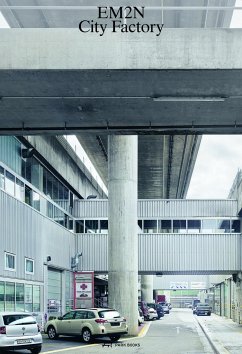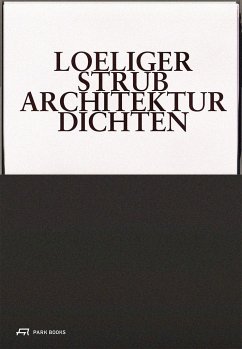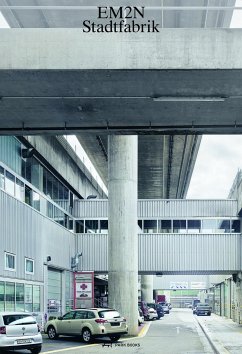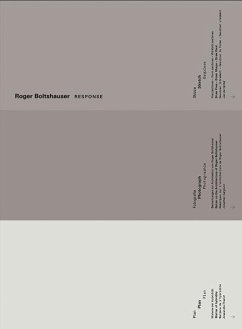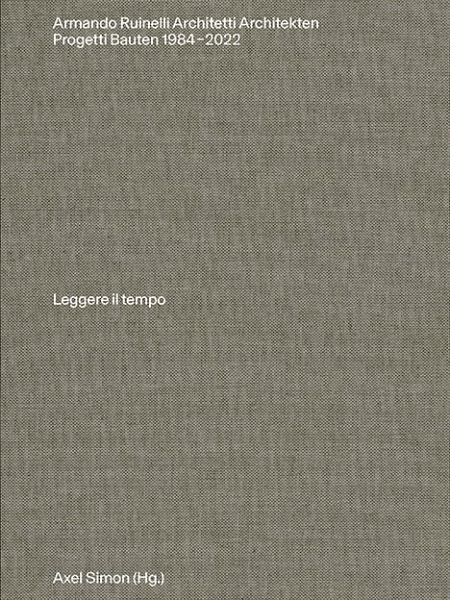
Armando Ruinelli Architekten
Bauten 1982-2022. Leggere il tempo
Herausgegeben: Simon, Axel;Mitarbeit: Simon, Axel; Aicher, Florian; Caminada, Gion A.; Innocenti, Anna; Miller, Quintus; Ruinelli, Armando; Seifert, Ludmila
Versandkostenfrei!
Sofort lieferbar
58,00 €
inkl. MwSt.

PAYBACK Punkte
0 °P sammeln!
Selten sind Architekten mit ihrem Wirkungsort so verbunden wie Armando Ruinelli. Doch anders, als man es bei einem Dorf von knapp 100 Einwohnern wie dem im schweizerischen Bergell gelegenen Soglio erwarten würde, ist die Beschränkung in diesem Fall eine Auszeichnung. Haltung und Werk des 1954 geborenen Armando Ruinelli sind beinahe organisch aus dem starken Steinkörper dieses Dorfes gewachsen. So wurde der Architekt eine internationale Autorität im Weiterbauen am Vorhandenen, gerade in den Bergen. Er lehrt, hält Vorträge, sitzt in Jurys und Gestaltungskommissionen. Und er baut. Nicht vie...
Selten sind Architekten mit ihrem Wirkungsort so verbunden wie Armando Ruinelli. Doch anders, als man es bei einem Dorf von knapp 100 Einwohnern wie dem im schweizerischen Bergell gelegenen Soglio erwarten würde, ist die Beschränkung in diesem Fall eine Auszeichnung. Haltung und Werk des 1954 geborenen Armando Ruinelli sind beinahe organisch aus dem starken Steinkörper dieses Dorfes gewachsen. So wurde der Architekt eine internationale Autorität im Weiterbauen am Vorhandenen, gerade in den Bergen. Er lehrt, hält Vorträge, sitzt in Jurys und Gestaltungskommissionen. Und er baut. Nicht viel, aber fein.
Das zeigt dieses Buch: Von ersten Bauten im Heimatdorf aus den 1980er-Jahren über Um- und Neubauten, die lokale Traditionen weiterführen, aber auch heutigen Wohnvorstellungen gerecht werden, bis hin zu den neuesten Werken, bei denen sich seine architektonische Sprache emanzipiert, wie beim beinahe abstrakten Atelier für die Künstlerin Miriam Cahn in Stampa.
Neben Fotos und Plänen beleuchten Texte hochkarätiger Autorinnen und Autoren sowie ein Bildessay der Fotografin Katalin Deér die Bauten und die Haltung des Architekten und vermitteln die Besonderheiten seiner alpinen Lebenswelt.
Ausgezeichnet mit dem DAM Architectural Book Award als eines der zehn besten Architekturbücher 2023.
Das zeigt dieses Buch: Von ersten Bauten im Heimatdorf aus den 1980er-Jahren über Um- und Neubauten, die lokale Traditionen weiterführen, aber auch heutigen Wohnvorstellungen gerecht werden, bis hin zu den neuesten Werken, bei denen sich seine architektonische Sprache emanzipiert, wie beim beinahe abstrakten Atelier für die Künstlerin Miriam Cahn in Stampa.
Neben Fotos und Plänen beleuchten Texte hochkarätiger Autorinnen und Autoren sowie ein Bildessay der Fotografin Katalin Deér die Bauten und die Haltung des Architekten und vermitteln die Besonderheiten seiner alpinen Lebenswelt.
Ausgezeichnet mit dem DAM Architectural Book Award als eines der zehn besten Architekturbücher 2023.



